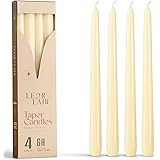Building an impressive outdoor water feature doesn’t require a massive budget or complex construction techniques, as the accompanying video brilliantly demonstrates using affordable Dollar Tree finds. This guide delves deeper into transforming simple materials into a captivating water feature, offering expert insights and actionable tips to elevate your DIY project.
Crafting Your DIY Dollar Tree Outdoor Water Feature
The foundation of a stunning outdoor water feature lies in thoughtful material selection and meticulous preparation. As shown in the video, Dollar Tree’s “Plus” section, particularly their new planters, provides excellent starting points for a budget-friendly project. The key is to see beyond the initial item and envision its potential.
Selecting Your Planters and Bowls
For this project, you will need at least two primary components: a larger base planter and a smaller bowl or planter that can sit atop it. The video highlights using a $5 planter from Dollar Tree Plus for the base. These are typically more substantial and durable, providing a stable foundation.
Furthermore, sourcing a coordinating bowl from the organization or kitchen section ensures a cohesive look. Look for pieces with interesting textures or shapes that will complement your outdoor aesthetic. The choice of two distinct pieces allows for the cascading effect essential to a dynamic water feature.
Achieving a High-End Finish with Spray Paint
The speaker in the video rightly emphasizes the power of spray paint to unify disparate pieces and create a sophisticated finish. Applying two coats of terracotta-colored spray paint, or any desired hue, transforms inexpensive plastic into a material that mimics higher-end pottery. This step is crucial for achieving an elevated aesthetic.
Proper surface preparation is vital for paint adhesion. Ensure your planters are clean and dry before painting. For optimal results, apply multiple thin coats rather than one thick coat, allowing ample drying time between applications. This technique prevents drips and provides a smooth, durable finish that withstands outdoor elements.
Essential Assembly Steps for Your Water Feature
Beyond the aesthetic, the functional integrity of your water feature depends on correct assembly. Implementing proper drainage and strategic rock placement ensures both the health of your plants and the longevity of your pump system.
Implementing Effective Drainage
While often overlooked in purely decorative pieces, drainage is critical for the bottom planter if you intend to incorporate live plants. The video instructs adding drainage holes, which is paramount for preventing root rot and maintaining plant health. Utilize a drill with an appropriate bit for plastic, creating several small holes rather than one large one to ensure even water dispersal.
Below the drainage holes, a layer of coarse aggregate, such as pea gravel or river rocks, further assists drainage. This acts as a reservoir, preventing soil from clogging the drainage holes while allowing excess water to escape. This expert technique supports robust plant growth within your water feature setup.
Strategic Rock Placement for Stability and Aesthetics
Rocks serve multiple purposes in your DIY water feature. Initially, placing a layer of larger rocks at the base of the bottom planter provides a stable platform for the upper bowl. This prevents the upper component from shifting and ensures a level surface for the water’s flow.
In the top planter, adding smaller decorative rocks or pebbles helps to anchor the solar pump, concealing it while allowing water circulation. This also adds a textural element to the feature. Remember to rinse any outdoor rocks thoroughly before adding them to prevent introducing dirt or debris into your clean water system.
Integrating Flora: Planting Around the Base
The video suggests planting flowers around the bottom planter, a crucial step for integrating the water feature seamlessly into your garden or patio. Choose plants that thrive in conditions similar to your water feature’s location—whether full sun or partial shade.
Consider species like petunias, impatiens, or trailing vinca for vibrant color and texture. For a more lush, tropical feel, select plants such as coleus or ferns. The foliage and blooms soften the edges of the planters, creating a natural, inviting look and enhancing the overall visual appeal of your outdoor oasis.
Powering Your Feature: The Solar Water Pump
The innovation of solar-powered water pumps makes this DIY project both environmentally friendly and incredibly convenient. Understanding how these pumps operate and their requirements is essential for optimal performance.
Choosing and Installing Your Solar Pump
The video mentions a specific solar water feature pump, often linked from the creator’s storefront. These compact, submersible pumps typically come with a small solar panel and various fountainhead attachments. When selecting a pump, consider its flow rate and spray height, ensuring it’s appropriate for the size of your top bowl.
Installation is straightforward: submerge the pump in the water-filled upper bowl, connect it to the solar panel, and position the panel in direct sunlight. Ensure the pump’s intake is not obstructed by rocks or debris. Many solar pumps include suction cups on the bottom to secure them to the planter’s base.
Optimizing Pump Performance: Sun Exposure
The distinction between “FULL SUN” and “SHADED” operation is a vital detail highlighted in the video. Solar pumps rely entirely on direct sunlight to generate power. In full sun, you can expect robust water flow and consistent fountain effects. This is the ideal condition for these units.
Conversely, a shaded location will significantly reduce the pump’s efficiency, resulting in weaker flow or intermittent operation. If your desired location is partly shaded, consider pumps with battery backup features that store energy, providing continuous operation even during cloudy periods or after dusk. Always position the solar panel where it receives maximum direct sunlight throughout the day to ensure your Dollar Tree water feature performs at its peak.











